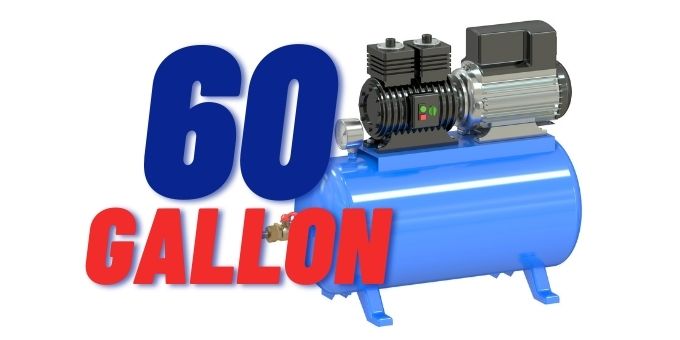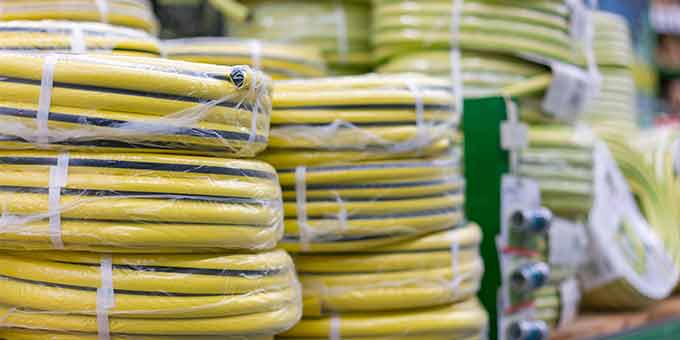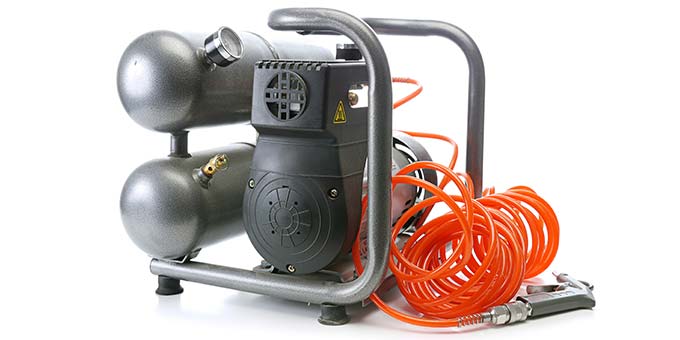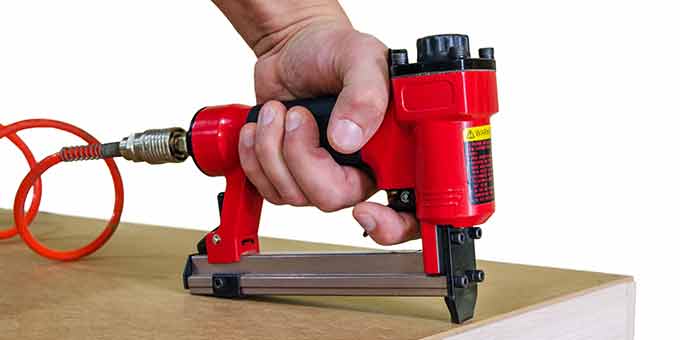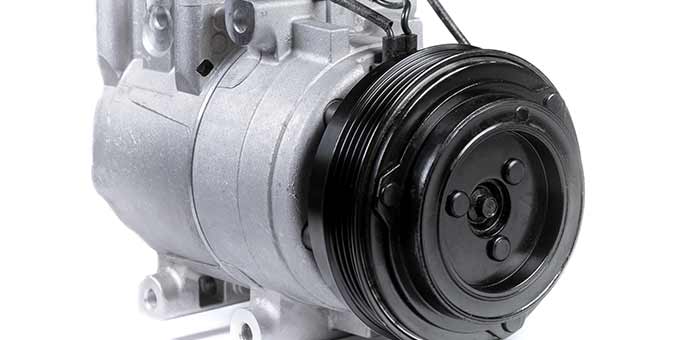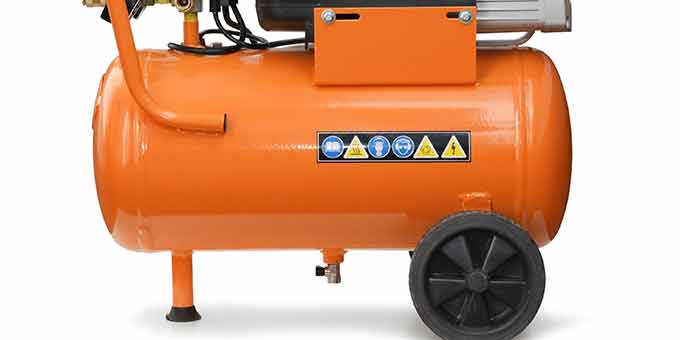If you’re a DIY enthusiast, chances are you have an air compressor at home. These tools are incredibly useful for a wide range of tasks, from inflating tires to powering air tools. However, air compressors can also be quite loud, with some models reaching decibel levels of 100 or more. This level of noise can be disruptive and even dangerous if it is not properly addressed. In this article, we’ll show you how to make a simple DIY air compressor silencer that will help reduce the noise of your air compressor.
How to Make Your Own Air Compressor Silencer to Reduce Noise
The first thing you’ll need to do is gather the materials you’ll need for your silencer. You’ll need a piece of foam rubber, some self-adhesive felt, a pair of scissors, and a few small screws. Foam rubber and self-adhesive felt are commonly used materials for air compressor silencers, as they are durable and able to withstand the heat and pressure of the air compressor.
Once you have all of your materials, the next step is to cut the foam rubber into a rectangular shape that will fit over the exhaust port on your air compressor. The exact size and shape will depend on the make and model of your air compressor, so you’ll need to measure carefully to ensure that your silencer fits properly. Cutting the foam rubber to the right size and shape is important, as a silencer that is too small or too large will not be effective at reducing noise.
Once you have the foam rubber cut to the right size, use the self-adhesive felt to attach it to the exhaust port on your air compressor. Make sure that the felt is attached securely and covers the entire surface of the foam rubber. This will help to reduce the noise produced by the air compressor, as the felt will absorb some of the sound waves and the foam rubber will block the escape of air, which can produce noise. Attaching the felt to the foam rubber properly is crucial, as any gaps or holes in the felt will reduce the effectiveness of the silencer.
Now it’s time to attach the silencer to the air compressor. Use the small screws to secure the foam rubber and felt to the air compressor, making sure that the silencer is firmly attached. This will help to ensure that the silencer stays in place and continues to provide effective noise reduction. It’s important to use the right size and type of screws for your air compressor, as screws that are too large or too small, or that are not compatible with the material of your air compressor, can cause damage or prevent the silencer from working properly.
That’s it! Your DIY air compressor silencer is now ready to use. Simply turn on your air compressor and test it out to see how much quieter it is. You may need to experiment with the size and shape of your silencer to get the best possible results, but with a little trial and error, you should be able to reduce the noise of your air compressor significantly. Testing your silencer is important, as it will allow you to determine whether it is working properly and providing the level of noise reduction that you want.
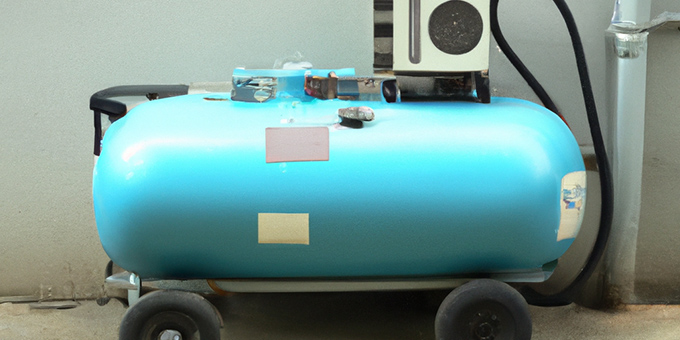
DIY Air Compressor Silencer Can Improve Efficiency and Reduce Noise
In addition to reducing noise, a DIY air compressor silencer can also help to improve the efficiency of your air compressor. By reducing the amount of noise produced, the silencer can help to prevent air loss and reduce wear and tear on the compressor, which can help to extend its lifespan. This can be especially beneficial if you use your air compressor frequently, as it can help to keep your air compressor running smoothly and efficiently for longer. In addition to extending the lifespan of your air compressor, a silencer can also help to save energy, as a quieter air compressor will require less power to operate.
In addition to using a DIY air compressor silencer, there are other steps you can take to reduce the noise of your air compressor. For example, placing the air compressor in a well-insulated area can help to absorb some of the noise, and using an air hose with a larger diameter can help to reduce the amount of noise produced by the compressor. These steps can help to reduce the noise of your air compressor further and make it more pleasant to use.
Another option is to purchase a commercial air compressor silencer. These silencers are specifically designed to reduce the noise of air compressors, and they are typically made of high-quality materials that are more effective at reducing noise than a DIY silencer. When shopping for a commercial air compressor silencer, it’s important to consider the size and design of the silencer, as well as the decibel level and other specifications that are relevant to your air compressor. Reading customer reviews and comparing different silencers can also help you find the best option for your needs.
Regardless of whether you choose to make a DIY air compressor silencer or purchase a commercial one, taking steps to reduce the noise of your air compressor can have a number of benefits. A quieter air compressor will be more pleasant to use, and it will also be less disruptive to your surroundings. In addition, reducing the noise of your air compressor can help to prevent hearing loss and other health problems that can be caused by prolonged exposure to loud noises.
Most Quiet Air Compressors:
The Stealth SAQ-12018 Ultra Quiet
The Stealth SAQ-12018 Ultra Quiet Air Compressor is a powerful and durable option for those who need a low-noise air compressor. The air compressor has a 20-gallon tank and is equipped with a 1.8 horsepower motor that provides fast and efficient air compression. It has a maximum pressure of 120-150 PSI and is capable of delivering a flow rate of 169.8 L/min at 2.8 bar and 141.5 L/min at 6.2 bar. The air compressor is also oil-free, which helps to reduce maintenance and ensures that the air delivered is clean and dry.
The Stealth SAQ-12018 is designed to be easy to use and maintain. It has convenient rubber wheels for easy transport, and the air filter is easy to access and clean. The air compressor also has a 50% duty cycle, which means it can be used for extended periods of time without overheating. In addition, the air compressor has a noise level of less than 70 dB(A) at a distance of 2 meters, making it one of the quietest air compressors on the market.
The Stealth SAQ-12018 Ultra Quiet Air Compressor is a robust and durable option that offers low noise output and efficient air compression. Its 20-gallon tank, 1.8 horsepower motor, and oil-free design make it a versatile and reliable choice for various applications.
The California Air Tools 2010A Ultra Quiet
The California Air Tools 2010A Ultra Quiet & Oil-Free Air Compressor is designed to be one of the quietest air compressors on the market, with a noise level of only 60 decibels. The powerful 1.0 HP motor operates at just 1680 RPM, reducing noise and wear on the compressor. The oil-free dual piston pump system is engineered for high performance and durability, with a life cycle of over 3000 hours.
The 2.0-gallon aluminum air tank is lightweight and easy to transport, making the air compressor a good option for those who need to take their compressor on the go. The air compressor has a maximum pressure of 120 PSI and can fill the tank from empty to full in just 50 seconds. It is also equipped with thermal overload protection and two pressure control gauges for added convenience.
Overall, the California Air Tools 2010A Ultra Quiet Air Compressor is a powerful and durable option that offers low noise output and efficient air compression. Its oil-free design and lightweight construction make it a versatile and reliable choice for a wide range of applications.
BOSTITCH BTFP02012 Pancake
The BOSTITCH BTFP02012 Pancake Air Compressor is a portable and lightweight option that offers convenient and efficient air compression. The air compressor has a 6-gallon tank and a maximum pressure of 150 PSI, providing a good balance of capacity and portability. It is equipped with an oil-free, maintenance-free pump that delivers 2.6 SCFM* 90 PSI, allowing for long tool run times with quick recovery.
One of the standout features of the BOSTITCH BTFP02012 is its low operational noise level of 78.5 dBA**, which makes it an ideal choice for those who want to use their air compressor in a shared space or quiet work environment. The air compressor is also easy to carry and store, weighing just 29 pounds. It is equipped with a high-efficiency motor that allows for easy start-up in cold weather or when using an extension cord.
Overall, the BOSTITCH BTFP02012 Pancake Air Compressor is a portable and lightweight option that offers efficient air compression and low operational noise. Its oil-free pump and high-flow regulator make it a reliable choice for various applications.
FAQ's
How silent is a silent compressor?
The level of silence will vary depending on the specific air compressor and its design. Some air compressors are designed to operate at very low noise levels, typically below 60 decibels. However, it is worth noting that the actual noise level of an air compressor can vary depending on factors such as the surrounding environment, the type of tools being used, and the specific use case.
How many decibels is considered quiet for an air compressor?
The noise level of an air compressor is typically measured in decibels (dB), with lower decibel levels indicating a quieter compressor. In general, an air compressor that operates at 60 decibels or lower is considered to be relatively quiet. However, the acceptable noise level can vary depending on the specific situation and the user’s personal preferences.
Are belt driven air compressors quieter?
Belt-driven air compressors are typically quieter than direct-driven air compressors, as the belts help to dampen vibrations and reduce noise. However, it is worth noting that the actual noise level of a belt-driven air compressor will depend on a variety of factors, such as the design of the compressor and the type of tools being used.
Is a two-stage compressor quieter?
Two-stage compressors are typically quieter than single-stage compressors, as they use two cylinders to compress the air instead of one. This can help to reduce the noise level and make the air compressor more suitable for use in quiet environments. However, it is worth noting that the actual noise level of a two-stage compressor will depend on the specific design and features of the compressor.
Bottom Line
Making a DIY air compressor silencer is a simple and effective way to reduce the noise of your air compressor. With a few basic materials and a bit of elbow grease, you can create a silencer that will make your air compressor much more pleasant to use. If you’re unable to make a DIY silencer, or if you want a more professional solution, there are several commercial air compressor silencers available on the market that can provide effective noise reduction. By reducing the noise of your air compressor, you can make your workshop or garage a quieter and more enjoyable place to work.







